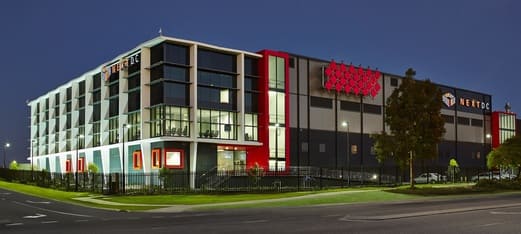By Andrew McNutt, Mining & Resources Sales Lead
Collectively and individually, mining and exploration companies continue to level-up their commitment to unlocking the potential of digital transformation. Maturing technologies such as cloud, AI and 5G are influencing strategic thinking while helping to leverage captured information as intellectual capital.
Real time data analytics supported by high-performance interconnection to digital services is proving to be the shortest route to continual improvement of critical metrics guiding safety, productivity, cost reduction and environmental sustainability gains.
The mine of the future
All businesses can learn from the way our economy’s biggest contributors have embraced digital transformation. For the resources sector, the next step is to continue modernisation of their application stack and process captured data closer to the operational edge, providing actionable outcomes and accelerating application viability at the mine-site.
Smart mining operations will continue finding ways to capture the full value of cloud-connected technologies such as virtual/augmented reality, IoT and machine learning. As the volumes of data collected compound, the challenge shifts to leveraging this data to drive prioritised business improvement.
Core to edge
Mining and exploration companies are only just starting to scratch the surface of innovation opportunities created from evolving cloud, core and edge applications supporting their business priorities. In the context of extending technology-driven gains, extracting maximum ROI is dependent upon real-time, ‘core to edge’ thinking.
In the future, core to edge will be a holistic strategy facilitating seamless movement of data between centralised and remote systems, people and applications. Interconnection strategy becomes fundamental to successfully processing, inspecting and analysing large volumes of data that inform critical strategic decision making in real time.
As an example, machine learning algorithms analysing years of operational data are being used to ensure critical plant and equipment stays in production longer, performs more efficiently and/or reduces total lifecycle costs. That sort of big data is captured at the edge and analysed at the core.
Interconnection architecture
Autonomous mining and freight continue to reap enormous benefits to productivity, safety and cost reduction but behind its success is complex, critical infrastructure and interconnection architecture. Increasing volumes of data from telemetric probes, cameras and PPE (to name but a few) need to be captured, transported and analysed in real time.
This is where technology must intercept with central intelligence teams, enabling them to draw insights and inform critical decision-making at the core that yields productivity and safety enhancements at the edge.
There are two fundamental elements contributing to a core-to-edge strategy’s ability to achieve desired operational outcomes:
1. Modernised Application Strategy
Your application strategy should be focused on utilising cloud-based services (where possible) from core to edge. This will drive increased application resiliency and provide further insights into your most critical asset, your data.
By focusing your strategy on these virtual tools and systems, it doesn’t matter if the application is sitting within your core or hosted at the edge. Ultimately, it resides on the same underlying technologies which in turn, makes it simpler to deploy, manage and improve.
These edge-based services will empower your organisation to unlock a whole new innovation cycle that will drive positive business outcomes while improving flexibility and agility to meet changing priorities and market dynamics. Real-time decision making at remote mine sites will be difficult to achieve without these under pinning edge-to-core services.
2. Remote operations centres (ROCs):
ROCs represent the ‘nerve centres’ of future mining operations. ROCs orchestrate Hybrid architecture at the core to better utilise plant, equipment, people and technology at the edge.
Delivering real-time visibility over mine operations, ROCs will continue to play a crucial role in enabling growth in production and more streamlined efficiencies through more informed decision making based on analysing huge volumes of data transported to and from the edge.
These ROCs are fundamental to a core to edge approach, with your strategic digital partners within a sovereign ecosystem being critical to accelerating the long-term gains and future opportunities unveiled via their deployment.
It makes sense to leverage proven high availability, secure and interconnected spaces to drive innovation and improvement that’s aligned to defined business priorities. Ultra-low-latency connectivity to clouds and other services accompanied by 100% uptime infrastructure resilience are also success imperatives.
Zero-carbon mines
Low net-carbon footprint will be another key feature of future mining operations. As automation and digitisation accelerates at both the core and the edge, the carbon footprint of compute power plus the infrastructure required to house and manage it also grows.
Investors, customers, teams and regulators are all ramping up scrutiny of the whole economy’s performance when it comes to environmental sustainability. Our new Federal Government has committed to driving a 43% decrease in carbon emissions nationally by 2030.
Mining and exploration companies will have a significant role to play in achieving this including accounting for and improving the carbon burden of digital acceleration. The easiest way to negate the impact of digitisation on carbon reduction goals is to leverage pre-engineered sustainable and energy efficient solutions that guarantee the most efficient use of power.
Partners should also be able to calculate your carbon usage for reporting purposes and deliver accredited offsets that neutralise your output, all while ensuring performance is never compromised.
Reach out to NEXTDC if you want to better understand how premium colocation services hosting secure and sovereign ecosystems of cloud and IT services providers will support future success for mining and other businesses.


